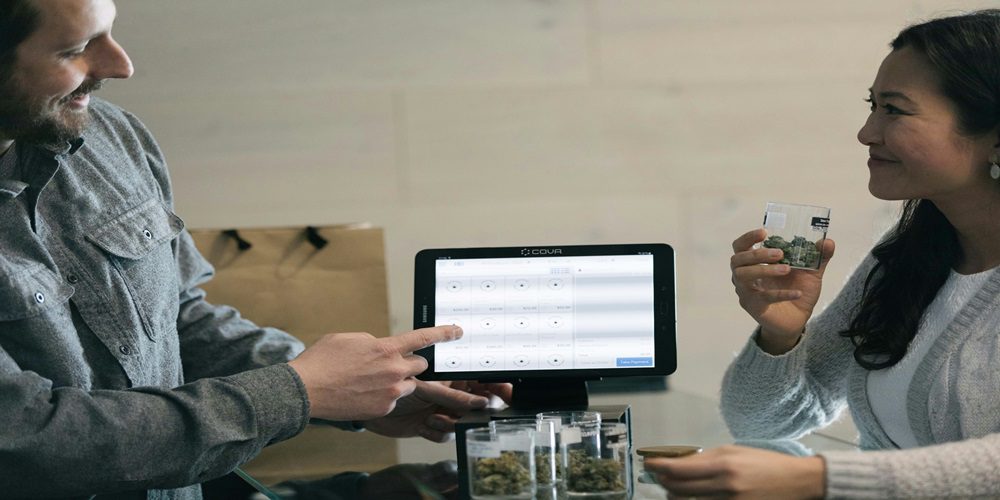Welcome to the future of consumer service! With rapid advancements in technology, our everyday experiences are continuously being transformed. From ordering food to booking vacations, technology has revolutionized how we interact with businesses and brands. In this blog post, we will dive deep into the various trends and innovations that have reshaped customer service as we know it. So buckle up and get ready to explore how technology is driving unparalleled convenience, personalization, and satisfaction for consumers around the world!
Introduction to the role of technology in consumer service
Technology has become an integral part of our daily lives, with its influence reaching every aspect of society. It has undoubtedly transformed the way we interact, communicate, and do business. In recent years, technology has also played a significant role in revolutionizing consumer service in various industries.
The rise of e-commerce and the increasing demand for faster and more efficient solutions have pushed businesses to integrate technology into their customer service strategies. With the advancement of technology, consumers now expect seamless and personalized experiences when interacting with brands.
One of the key roles that technology plays in consumer service is enhancing communication between customers and businesses. Traditional modes of communication such as phone calls and emails are slowly being replaced by more innovative channels like live chat, social media messaging, and chatbots. These options provide customers with instant responses to their queries or concerns, reducing waiting times and improving overall satisfaction.
Moreover, customer relationship management (CRM) software has greatly improved the efficiency of handling customer data. Businesses can gather valuable information about their customers’ preferences, purchase history, and behavior through CRM systems. This allows them to personalize interactions with each customer based on their needs and preferences.
Technology has also enabled self-service options for customers. Nowadays, consumers can access product information or resolve issues without having to speak directly with support staff through online FAQs or video tutorials. This not only saves time but also gives customers a sense of autonomy in solving their problems.
Benefits of using technology in consumer service
1. Improved Efficiency and Speed: One of the major benefits of technology in consumer service is improved efficiency and speed. With the use of tools such as chatbots, automated responses, and self-service portals, businesses can handle a large volume of customer queries and requests quickly and accurately. This not only saves time for the customers but also reduces the workload on customer service representatives, allowing them to focus on more complex issues.
2. 24/7 Availability: Unlike traditional customer service methods where working hours are limited, technology has made it possible for businesses to provide round-the-clock support to their customers. Customers no longer have to wait until office hours to get their concerns addressed; they can easily reach out at any time through various digital communication channels like live chat or email.
3. Personalized Customer Experience: Technology allows businesses to collect vast amounts of data about their customers’ behavior, preferences, and needs. With this information, companies can customize their services according to each individual’s needs or interests. For example, music streaming platforms use algorithms based on listening history to curate personalized playlists for users.
4. Cost-Effective: Implementing technological solutions can significantly reduce costs associated with traditional customer service methods such as hiring staff or setting up physical call centers. Automation tools like chatbots not only save money but also improve response times and accuracy.
Current trends and innovations in consumer service technology
Consumer service technology has come a long way in recent years, and it continues to evolve at a rapid pace. With the rise of digitalization and the increasing demand for convenience and efficiency, businesses are constantly looking for ways to improve their customer service processes through the use of technology. In this section, we will discuss some of the current trends and innovations in consumer service technology that are revolutionizing the way companies interact with their customers.
1. Automation and Artificial Intelligence (AI):
One of the biggest trends in consumer service technology is automation and AI. Many companies are implementing chatbots, virtual assistants, and other forms of AI to handle basic customer inquiries and provide quick responses. These technologies can handle repetitive tasks such as order tracking, product recommendations, and frequently asked questions, freeing up human agents to focus on more complex issues. This not only improves response times but also reduces costs for businesses.
Furthermore, AI-powered tools can analyze data from customer interactions to gather insights on customer behavior and preferences. This allows companies to personalize their services based on individual needs, making for a more seamless experience for customers.
2. Omnichannel Customer Service:
With the rise of multiple communication channels such as phone calls, email, social media messaging apps like WhatsApp or Messenger, consumers expect to be able connect with businesses whenever and wherever they want. As a result, many companies have adopted an omnichannel approach by integrating all these channels into one unified platform for managing customer interactions.
Omnichannel services allow customers to seamlessly switch between channels without having to repeat their issue or information. This not only improves the customer experience but also enables companies to gather and analyze data from all channels, providing a complete view of each customer’s interactions.
3. Virtual and Augmented Reality (VR/AR):
Virtual and augmented reality have mainstreamed in many industries, including consumer service. VR/AR technology allows businesses to showcase their products or services in a more immersive way that enhances customer experience and engagement.
For example, some retail stores are now using AR mirrors to allow customers to try on clothes virtually before making a purchase. Similarly, some home decor companies are using AR tools that enable customers to visualize how furniture will look in their homes before buying it.
4. Self-service options:
Self-service options have become increasingly popular among consumers, as they prefer the convenience of solving issues on their own without having to interact with a company’s customer service department. Self-service can take the form of online FAQs, forums, chatbots, or self-checkout kiosks.
Self-service not only saves time for customers but also reduces costs for businesses as fewer human agents are needed for tasks that can be automated.
Case studies of companies successfully implementing technology in their customer service strategies
Technology has become a vital aspect in the world of customer service, enabling businesses to provide better and more efficient support to their customers. In today’s competitive market, harnessing the power of technology is crucial for companies to stay ahead and create a positive customer experience. To showcase the impact of technology on customer service, let’s take a look at some successful case studies of companies that have successfully integrated technology into their customer service strategies.
1. Zappos: Personalizing Customer Experience through Technology
Zappos, an online shoe and clothing retailer, is known for its exceptional customer service. One of the key factors behind this success is their use of technology to personalize the customer experience. Through data analysis, Zappos collects information on customers’ purchase history and browsing behavior to offer product recommendations that align with their preferences. Additionally, they also have a 24/7 live chat feature where customers can connect with representatives in real-time for any queries or concerns.
2. Starbucks: Utilizing Mobile Technology for Seamless Customer Service
Starbucks has been a pioneer in utilizing mobile technology to enhance its customer service strategy. Through its mobile app, customers can place orders and make payments from anywhere at any time. This has significantly reduced wait times in-store and improved overall efficiency. Moreover, Starbucks’ app also offers personalized rewards and promotions based on individual buying patterns, making the overall experience more convenient and enjoyable.
3. Delta Airlines: Innovating Customer Service through Virtual Assistants
Delta Airlines recognized the potential of artificial intelligence (AI) in delivering better customer service and implemented virtual assistants in its customer support strategy. Named “Delta Assist,” the virtual assistant is programmed to answer frequent queries, such as baggage fees and flight status, without having to speak with a live representative. This has significantly reduced call wait times for customers while also freeing up agents to handle more complex inquiries.
4. Airbnb: Providing Continual Support through Social Media
Airbnb, a leading online marketplace for vacation rentals, understands the importance of providing round-the-clock support to their customers. They have successfully utilized social media platforms like Twitter and Facebook to provide real-time assistance and address any concerns or complaints from their customers. By actively monitoring their social media accounts, Airbnb has been able to resolve issues quickly and effectively, resulting in higher customer satisfaction rates.
5. Amazon: Leveraging Technology for Efficient Delivery and Returns
Amazon, a giant e-commerce company, is known for its efficient delivery system through the use of technology. Through features like Amazon Prime 2-day delivery and one-click ordering, they have set high standards for speedy and hassle-free deliveries. Additionally, Amazon’s use of AI-powered chatbots has streamlined the return process by automating approvals based on predefined criteria, minimizing customer effort.
Challenges and limitations of technology in consumer service
Technology has undoubtedly played a major role in revolutionizing consumer service, making it more convenient, efficient and personalized. From ordering groceries to booking tickets, almost every aspect of our daily lives has been impacted by technological advancements. However, as with any new development, there are also challenges and limitations that come with the use of technology in consumer service.
One of the main challenges is the digital divide – the gap between those who have access to technology and those who do not. Despite the constant efforts towards digital inclusion, there still exists a significant portion of the population that lacks proper infrastructure or resources to fully utilize these technological advancements for their benefit. This can lead to significant disparities in customer experiences and satisfaction levels.
Moreover, there is often a learning curve associated with adopting new technology for both consumers and service providers. While younger generations may be quick to adapt to new tools and features, older generations may struggle with them, leading to frustration and potential loss of customers from this demographic. This highlights the importance of effective training programs and user-friendly interfaces when introducing new technology into consumer service.
Another limitation is the reliance on technology for customer interactions. As more companies rely on chatbots and automated systems for customer support, there is a risk of losing human touch in these interactions. While such technologies can handle simple queries efficiently, they may fall short in dealing with complex or emotionally charged situations where empathy and understanding play a crucial role. In such cases, having knowledgeable human agents available as backups is essential.
The future of consumer service with the continued advancement of technology
Technology is constantly evolving and transforming the way we interact with businesses and services. From chatbots to personalized recommendations, advancements in technology have greatly improved the overall consumer service experience. However, this is just the beginning as there are even more exciting innovations on the horizon that will continue to revolutionize consumer service.
One of the key advancements in technology that will shape the future of consumer service is Artificial Intelligence (AI). AI-powered chatbots have already changed the game when it comes to customer support. These intelligent computer programs can provide instant and accurate answers to a wide range of queries, reducing wait times and improving overall customer satisfaction. But AI’s capabilities don’t stop there – it can also analyze vast amounts of data to identify patterns and preferences, allowing businesses to personalize their services for each individual customer.
Another area where AI is making waves in consumer service is through virtual assistants such as Amazon’s Alexa or Apple’s Siri. These voice-activated digital helpers are becoming increasingly popular for managing tasks like placing orders or scheduling appointments, making it easier than ever for customers to interact with businesses.
As we move towards a more connected world, Internet of Things (IoT) devices are also set to play a crucial role in shaping the future of consumer service. IoT devices include everyday objects like smart refrigerators or wearable fitness trackers that are connected to the internet, gathering data that can be used by businesses for more efficient and personalized experiences.
Conclusion
As technology continues to advance at a rapid pace, it is clear that it has revolutionized the way businesses interact with their consumers. We have seen changes in customer service processes and strategies as companies adapt to meet the demands of a digital age. From chatbots and artificial intelligence to personalized experiences and virtual reality, technology has opened up endless possibilities for improving consumer service. With these trends and innovations constantly evolving, we can only imagine what the future holds for consumer service in the tech world. The key will be for businesses to stay ahead of the curve and embrace these changes in order to provide exceptional service experiences for their customers.



































